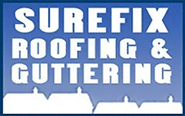Established in 1997
The Ultimate Guide to Regular Roof Inspections: Protecting Your Home Year-Round
Your roof is one of the most crucial components of your home, acting as the first line of defence against the elements. However, many homeowners overlook the importance of regular roof inspections until a problem arises. By proactively monitoring your roof's condition, you can identify issues before they become significant problems, saving you time, money, and stress.
Why Regular Roof Inspections Are Essential
- Early Detection of Problems: Routine inspections allow you to spot potential issues early, such as missing shingles, leaks, or signs of wear. The sooner you identify these problems, the easier and less costly they are to fix.
- Extending Roof Life: Just like any other part of your home, your roof benefits from regular maintenance. Inspecting and addressing minor issues can significantly extend its lifespan, ensuring you get the most out of your investment.
- Preventing Water Damage: One of the most significant threats to your home is water damage. Regular roof inspections help ensure your roof remains watertight, preventing leaks that can lead to costly repairs and mould growth.
- Maintaining Property Value: A well-maintained roof contributes to your home's kerb appeal and overall value. Potential buyers are more likely to be attracted to a property with a roof that is in good condition.
What to Look For During an Inspection
- Shingle Condition: Look for any missing, curling, or cracked shingles. These can indicate that your roof is nearing the end of its life or that it requires repairs.
- Flashing Issues: Check the metal flashing around chimneys, vents, and skylights. Damaged flashing can lead to leaks.
- Gutter Maintenance: Ensure your gutters are clear of debris and functioning properly. Clogged gutters can cause water to back up, leading to roof damage.
- Moss and Algae Growth: While some growth may not be harmful, excessive moss can trap moisture and lead to damage.
- Interior Signs of Leaks: Look for signs of water damage on ceilings and walls inside your home. Stains or mould can indicate that water is penetrating your roof.
Professional Help: When to Call in the Experts
While you can perform basic inspections yourself, it’s wise to have a professional roofing contractor conduct thorough inspections at least twice a year, preferably in spring and fall. Professionals can spot issues that may not be immediately visible and provide recommendations for repairs.
At Surefix Roofing, we are equipped to handle all your roof inspection needs. Our experienced team uses state-of-the-art tools and techniques to assess your roof's condition comprehensively. We also have an 18-metre cherry picker access platform, allowing us to reach most properties safely and efficiently for thorough roof inspections and repairs on roofs, chimneys, and gutters.
Conclusion
Regular roof inspections are essential for maintaining the integrity and longevity of your home. By staying proactive and addressing issues as they arise, you can protect your home from costly repairs down the line. If you haven’t had your roof inspected recently, consider reaching out to Surefix Roofing. We’re here to help you safeguard your home year-round, ensuring you enjoy peace of mind knowing your roof is in good hands.
Contact us today to schedule your roof inspection!










We will get back to you as soon as possible
Oops, there was an error sending your query.
Please try again later


